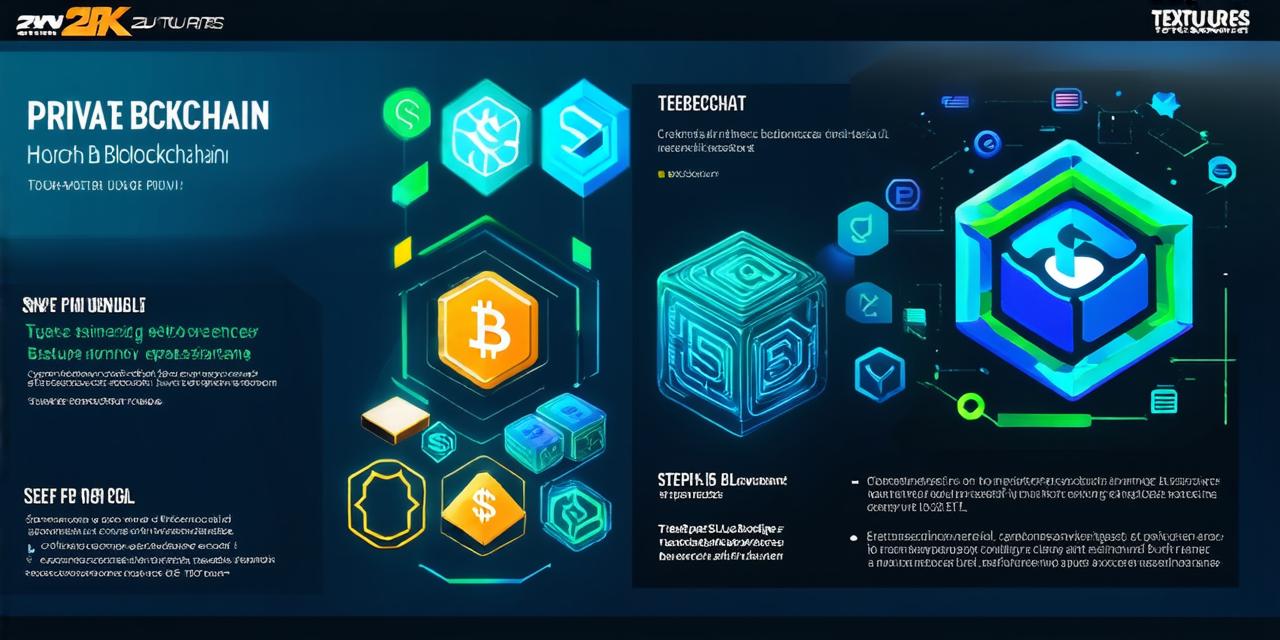Blockchain technology has revolutionized various industries and sectors in recent years, thanks to its decentralized, secure, and transparent nature.
What is a Private Blockchain?
A private blockchain, also known as a consortium blockchain or enterprise blockchain, is a decentralized network that allows only authorized participants to access and validate transactions. Unlike public blockchains, which are open to anyone, private blockchains have strict access controls in place to ensure data privacy and security.
Requirements for Creating a Private Blockchain
Before we dive into the technical aspects of creating a private blockchain, it’s essential to understand its requirements. Here are some crucial factors to consider:
- Consensus mechanism: The consensus mechanism is the process by which participants agree on the state of the blockchain. Common consensus mechanisms include proof-of-work (PoW), proof-of-stake (PoS), and delegated proof-of-stake (DPoS). Each mechanism has its strengths and weaknesses, so it’s important to choose the one that best suits your needs.
- Permissioned vs. permissionless: Private blockchains can be either permissioned or permissionless. Permissioned blockchains have strict access controls in place, while permissionless blockchains are open to everyone. It’s important to decide which type of blockchain you need based on your specific requirements.
- Network topology: The network topology refers to the structure of the network, including the number of nodes and their connections. Choosing the right network topology depends on factors such as scalability, fault tolerance, and cost.
- Smart contract programming language: Smart contracts are self-executing programs that automate transactions on the blockchain. The choice of smart contract programming language depends on your technical expertise and the complexity of your use case.
- Blockchain platform or software: There are several open-source blockchain platforms and software available, including Hyperledger Fabric, Corda, and Ethereum. Each platform has its features, so it’s important to choose the one that best suits your needs.

Steps to Create a Private Blockchain
- Define the use case: The first step is to define the use case and identify the specific requirements of your blockchain. This includes determining the type of consensus mechanism you need, the number of nodes required, and the smart contract programming language you will use.
- Choose a network topology: Based on your use case, choose a network topology that best suits your needs. Common network topologies include client-server, peer-to-peer, and hybrid.
- Select a blockchain platform or software: Choose a blockchain platform or software that meets your requirements. Each platform has its features, so it’s important to compare and choose the one that best suits your needs.
- Design the smart contracts: Design the smart contracts that will automate transactions on your blockchain. This involves defining the rules and logic for each transaction.
- Create a genesis block: The genesis block is the first block in the chain, and it contains the initial state of the blockchain. It also includes information about the network participants, the consensus mechanism, and the smart contract addresses.
- Add new blocks: Once you have created the genesis block, you can start adding new blocks to the chain. Each block contains a hash that references the previous block, ensuring the integrity of the chain.
- Test and deploy: Finally, test your blockchain thoroughly to ensure it meets your requirements. Once you are satisfied with the performance and functionality, deploy it to production.
Case Studies: Real-Life Examples of Private Blockchains in Action
Now let’s look at some real-life examples of private blockchains being used in various industries.
Food Traceability
Walmart launched a food traceability system on the IBM Food Trust, a private blockchain platform, to track the origin and movement of food products. This helped Walmart identify and remove contaminated products from its shelves quickly, reducing food waste and improving consumer safety.
Supply Chain Management
Maersk launched TradeLens, a private blockchain platform that facilitated supply chain management for the shipping industry. TradeLens enabled participants to share information in real-time, reducing delays, improving transparency, and increasing efficiency.
Identity Verification
Deloitte launched a private blockchain-based identity verification system called ID2020, which aimed to provide secure and verifiable identities for refugees. This system used biometric data to create unique digital identities that could be verified by anyone with access to the network.
Voting Systems
West Virginia launched an experimental blockchain-based voting system in the 2018 midterm elections, which allowed soldiers stationed overseas to vote securely and efficiently. The system used a private blockchain platform called Voatz to facilitate the voting process.
Conclusion
Creating a private blockchain can be a complex process, but with the right requirements and tools in place, it can be done effectively. Private blockchains offer several benefits over public blockchains, including increased efficiency, reduced costs, and better scalability. By following the steps outlined in this article and using real-life examples as inspiration, you can build a private blockchain that meets your specific needs and helps you achieve your business goals.
